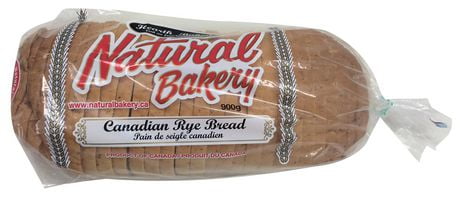On a pretty regular basis, I get questions about what kind of bread to eat, if bread is OK to eat, how much is OK, etc. I did some research this week on this particular topic, and here's what I found.
First of all - which breads are best??
- Look at the ingredients listed on the bag - and the first ingredient should say '100% whole grain' or 'whole grain' or '100% whole wheat' (always look for the word 'whole') - this means the germ and bran of the grain are still present, and so you're getting the maximum benefits out of this bread.
- IF the ingredients start with 'wheat flour' or 'unbleached flour', or even 'multi-grain' or 'seven-grain' - this basically means white bread that has been fortified with grains or wheat - these breads will be much higher on the glycemic index and will cause a larger blood sugar spike (more insulin in your system) - which when trying to lose weight is not good!
- WHEN you see 'stone-ground' - this is a good indicator that the germ and bran have been left intact - so this is OK
- WHEN you see 'sprouted' - this is also a good indicator that the bread is good, as you cannot sprout processed flour - so this is OK as well
- IF you choose a bread from a bakery with no ingredients - it's always best to ask the bakers if the bread was made with a predominantly whole grain flour
- If you're buying rye bread, again always look for 'whole rye flour' or 'whole rye meal' listed as the first ingredient
- If you're buying sourdough - look for a 'whole grain' sourdough option (most are made with white flour)
- If you're buying gluten-free breads - this one is tougher, as it's harder to find a gluten-free whole grain bread but see if you can find one that does list 'whole-grain' - using gluten free whole grains like whole grain brown rice, potato or corn, whole grain sorghum, whole grain buckwheat, whole grain millet, whole grain amaranth or whole grain quinoa.
Other things to watch for on the nutrition label:
- 3-5g of fiber per slice - the more fiber, the smaller the blood sugar spike (meaning - less insulin being released)
- no more than 200mg of sodium per slice - and when I started looking at this - I couldn't believe the amount of salt in bread... Too much salt will have an impact on blood pressure - and so anything around 300-400mg/slice is too high
- no added vegetable oils like soybean oil or safflower oil (too high in omega 6 - causes inflammation)
Some comparisons:
- Here's another common one (if you go to Costco) - Silver Hills Sprouted Bread (Squirrelly bread): first ingredients is: 'organic sprouted whole wheat' (has both the whole and sprouted words - very good), it's high in fiber and no vegetable oil, and low in fat (probably one of the best options out there): https://silverhillsbakery.ca/our-products/squirrelly-bread/
 Squirrelly
Squirrelly
- How about Dempsters - another option with many varieties - some better than others. Most of the whole wheat varieties do start their ingredients with: 'whole grain whole wheat flour including the germ'... which is great. And the fiber is decent (at 2g/slice) in most breads. Most of them contain vegetable oils in the ingredients though - so that would be the one downfall, but the fat is quite low (so - a decent choice for bread options, but not as good as the Squirrelly bread above).
- And the last one I had to peek at was Cobs - as I love Cobs bread (it's a nice treat in our house). Most of the whole wheat options did include 'whole grain' as the first ingredient, but many of them were lower in fiber and do contain vegetable oil. One of the best options at Cobs is the Cape Seed Loaf - at 3.5g of fiber/slice, it's made from whole grains and has 0 vegetable oils listed. The one downfall is that it's much higher in fat - due to all the added seeds. SO, when choosing a bread like this (fat is at 13g/two slices versus the Squirrelly bread at 1g/slice) - then you've got to cut back on your healthy fat that day, and make sure you don't overdo your added fats either! https://www.cobsbread.com/products/cape-seed-loaf/
 Cape®
Cape®
How much bread can you eat/day? I'd say MAX at having bread (or bread products) at only 1 meal per day... and try to get through some days without any bread (or bread products) at all. Your healthiest carb options are your whole foods: oatmeal, sweet potato, quinoa, barley, rice, beans and legumes, carrots, corn, etc.
Do you have to cut bread right out? ONLY if you were allergic (celiac) or felt you had an intolerance to wheat/gluten... and many people do! Too much wheat/gluten every day, overtime, will cause your body to reject it (especially in today's day as wheat has become so genetically modified). This then becomes an 'intolerance' to this food... which creates internal inflammation and can really slow down weight loss. This is WHY so many 'diets' pull bread (and wheat products) right out. IF you did feel you had an intolerance to bread (having symptoms like fatigue, bloating, constipation or diarrhea, skin rash, headaches, stubborn weight loss, etc.) - then you should pull it right out for a minimum of 30-60 days - to allow your intestinal tract to heal from the inflammation/damage it has caused... and eventually you would be able to tolerate it again (in small amounts).
Well, my 'small' email for today ended up being longer than I expected! But I hope you find this information helpful.
 Natural
Natural  Squirrelly
Squirrelly  Cape®
Cape®